MARIANI’S
Virtual Gourmet
OCTOBER
20, 2019
NEWSLETTER
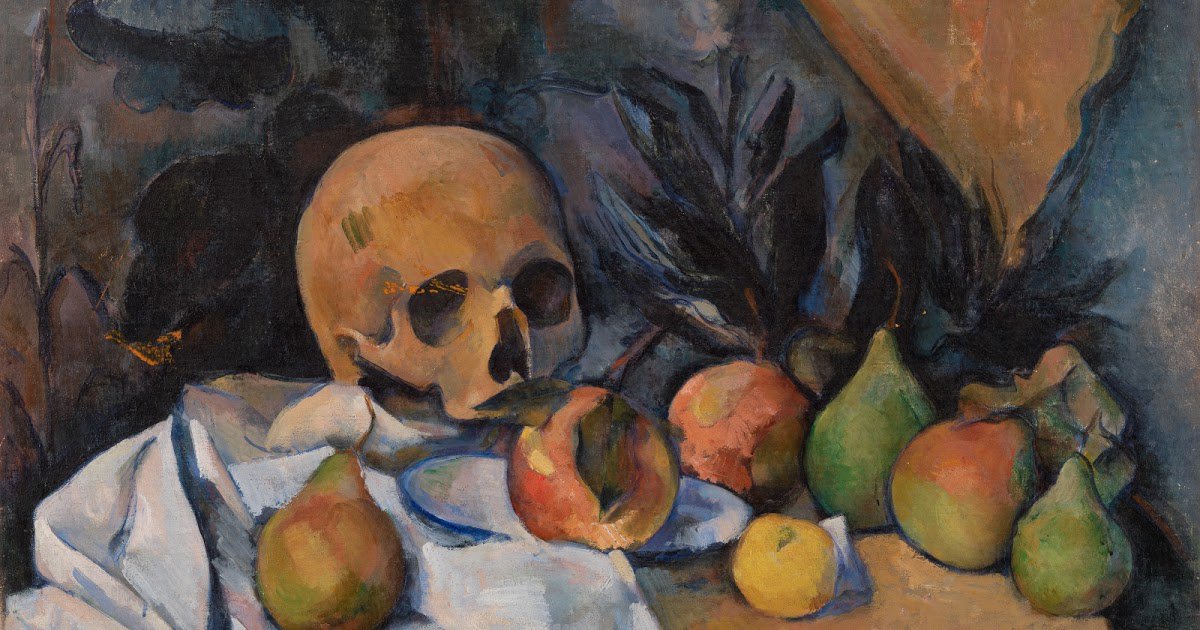
HAPPY HALLOWEEN!
❖❖❖

ANNOUNCEMENT: There will be no issue (Oct. 27) of Mariani's Virtual Gourmet because Mariani will be floating and eating around Italy's Lake Como.
❖❖❖
IN THIS ISSUE
SAN JOSÉ, COSTA RICA
By John Mariani
NEW YORK CORNER
NOREETUH
By John Mariani
NOTES FROM THE WINE CELLAR
THE SPARKLING WINES OF FRANCIACORTA
By John Mariani
❖❖❖
SAN JOSÉ,
COSTA RICA
By John Mariani
National Theater, San José
The principal appeal of
Costa Rica—and one easily understood when you
experience the lush countryside—is its
ecotourism, which takes in both the Caribbean
and Pacific, amidst all its vast forests and
volcano-dotted mountains, all teeming with
exotic wildlife. But its capital, San José, has
an abundance of interests for travelers, who can
be assured of a safe and secure holiday in a
Central American country with an exceptionally
high education level, sustainable energy,
historic importance and food culture. In fact,
San Jose is the sixth-most visited destination
in Latin America and first in Central America.
 San José is
actually a rather young city by colonial
standards, having been founded in 1736 by the
Spanish council of Cabildo de Léon and didn’t even
have a formal government until 1812, so its
colonial architecture owes more to the nineteenth
century than do those of other Latin American
countries. After the coffee industry, along with
rice, got underway in Costa Rica in the 19th
century, San José’s economy grew greatly.
San José is
actually a rather young city by colonial
standards, having been founded in 1736 by the
Spanish council of Cabildo de Léon and didn’t even
have a formal government until 1812, so its
colonial architecture owes more to the nineteenth
century than do those of other Latin American
countries. After the coffee industry, along with
rice, got underway in Costa Rica in the 19th
century, San José’s economy grew greatly.
Serviced by trains, buses,
taxis and Uber, the city is easy enough to get
around, despite heavy traffic, and, owing to its
safety, you can walk in most neighborhoods during
the day with a true sense of security.
The finest architecture of the
city is not in private mansions but in public
buildings like the Museo Naçional and, especially,
the Teatro Naçional de Costa Rico (left), which,
after seven years of construction delays, opened
to the public in 1827 with a performance of
Goethe’s Faust.
It was 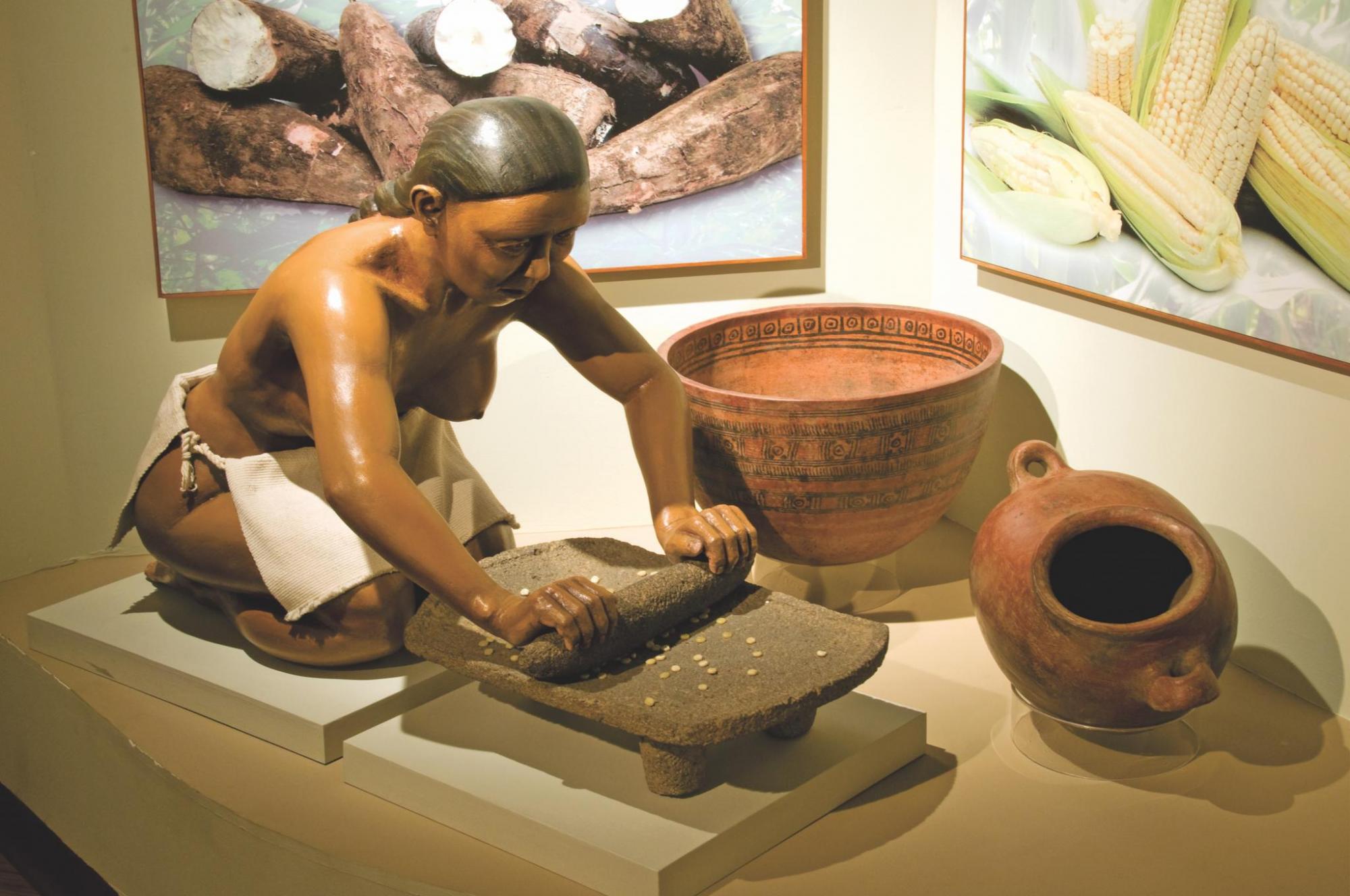 built with money from
taxes on coffee, rice and beans, and the interior
features a mural by Milanese artist Aleardo Villa
called the “Allegory of Coffee and Bananas,” in
commemoration of the local workers who built it.
built with money from
taxes on coffee, rice and beans, and the interior
features a mural by Milanese artist Aleardo Villa
called the “Allegory of Coffee and Bananas,” in
commemoration of the local workers who built it.
It is done in a splendid
Neo-Classical style, with a beige stone façade and
red roof, flanked by statues of Beethoven and
Spanish dramatist and poet Calderon de la Barca
and flower gardens. The theater’s performance
arena is marvelously gilded, with thick velvet
curtains and a magnificent rotunda and chandelier.
There is a café on the premises, too. Tours are
available or you can visit on your own, and there
are often free musical programs at midday and
Thursday evenings.
There
are several fine parks throughout San José—and 22
national parks throughout the country—the largest
being Parque Metropolitano La Sabana, which is
called the “lungs of San José,” while the Parque Okayama is a
beautifully landscaped Japanese garden.
Perhaps unique in the
world is the five-year-old Museo del Jade Fidel
Tristan Castro, which is wholly devoted to jade,
its history, industry and versatility, dating back
to work and art of Costa Rica’s Native American
people. There is also a Gold Museum displaying the
history of the most alluring treasure to spur the
colonization of Central America.
 Several art
museums treat the pre-colonial as well as the 19th
century and into modern-day Costa Rican culture.
The Museo Naçional (above) is housed in the
beautiful, ocher-colored Cuartel Bellavista
Building, once an army base, complete with
turrets, and the Museum of Contemporary Art
proudly exhibits local artists. There is also
a Gold Museum (right),
Bank Museum, a Stamp Museum, a Children’s Museum
and many others; in addition, the streets of
the city are sites for the public sculpture of
Jorgé Jiménez Deridía, born in Heredia, Costa
Rica, whose very modern work evokes both the
traditional art of the regions’ indigenous
people along with the monumentality of Fernando
Botero’s voluptuous nudes.
Several art
museums treat the pre-colonial as well as the 19th
century and into modern-day Costa Rican culture.
The Museo Naçional (above) is housed in the
beautiful, ocher-colored Cuartel Bellavista
Building, once an army base, complete with
turrets, and the Museum of Contemporary Art
proudly exhibits local artists. There is also
a Gold Museum (right),
Bank Museum, a Stamp Museum, a Children’s Museum
and many others; in addition, the streets of
the city are sites for the public sculpture of
Jorgé Jiménez Deridía, born in Heredia, Costa
Rica, whose very modern work evokes both the
traditional art of the regions’ indigenous
people along with the monumentality of Fernando
Botero’s voluptuous nudes.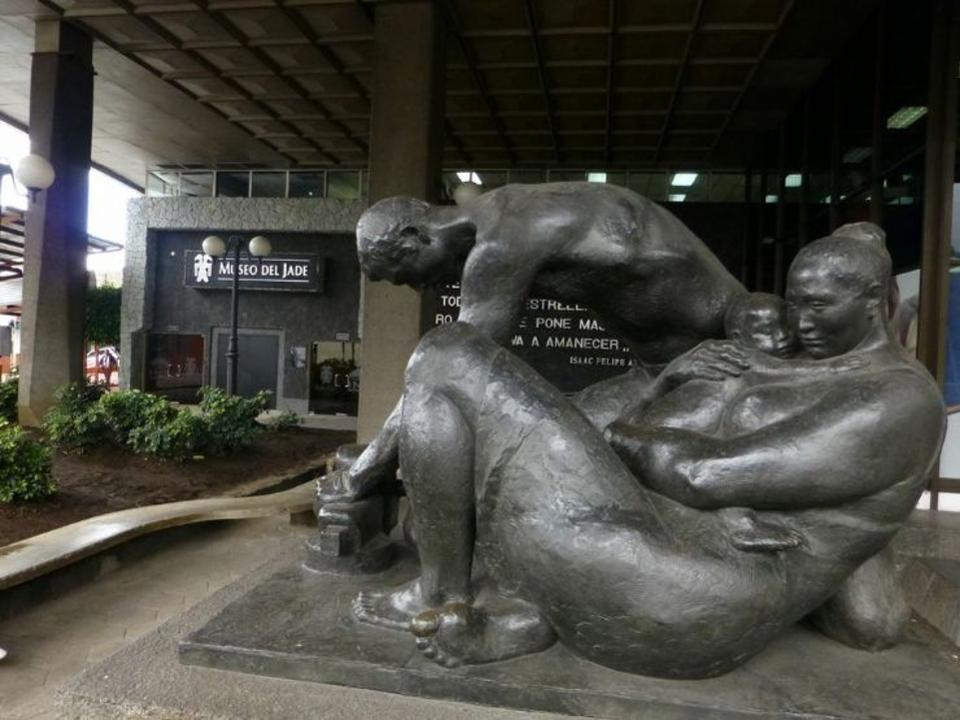
Costa Rica is a
Catholic country, so churches are everywhere in
San José. The
Cathedral, built in 1802 but destroyed by an
earthquake and rebuilt in 1871, has a fairly
somber façade, a mix of too many architectural
elements, from Neoclassical to Baroque. The more
Gothic Coronado, outside the city, is more
impressive. Far lighter, with a façade in a pale
gray limestone masonry trimmed in white, is the
Church of Our Lady of Solitude (left), with
exquisite, fluted Corinthian wooden columns
leading to the altar. Impeccably restored in 2012
after years of pollution took its toll, the church
stands apart from the crowded streets of San José.
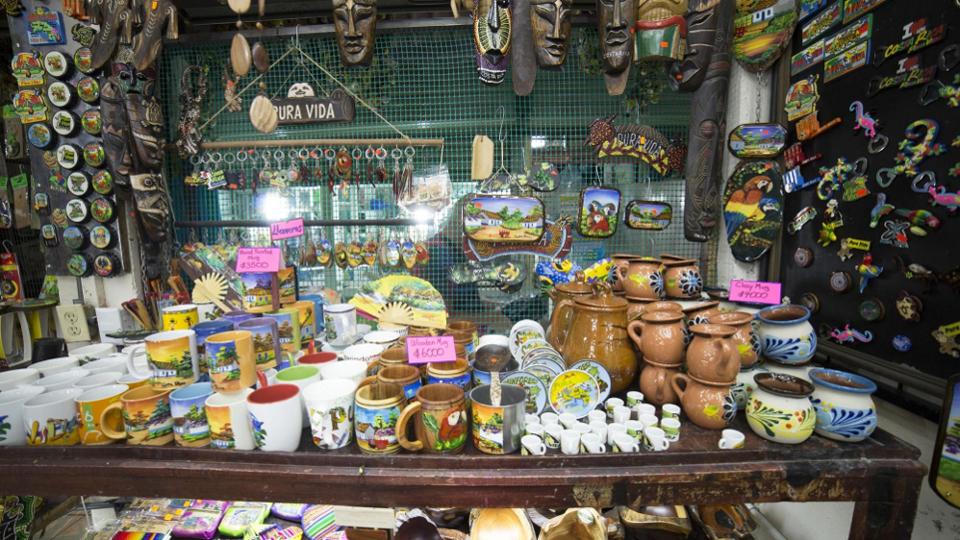 I’ll
be writing about San José’s food culture at
another time, but a principal attraction for
everyone is the vast Central Market, where it
would be difficult not to find anything and
everything one could want, from ceramics and seeds
and spices to sodas,
the local name for an eatery where elderly women
make tortillas by hand, and the city’s oldest
(1904) ice cream shop, La Sorbetera de Lolo Mora,
which dishes out a uniquely delicious soft vanilla
ice cream with an icy texture and crisp barqullos
sugar cookies.
I’ll
be writing about San José’s food culture at
another time, but a principal attraction for
everyone is the vast Central Market, where it
would be difficult not to find anything and
everything one could want, from ceramics and seeds
and spices to sodas,
the local name for an eatery where elderly women
make tortillas by hand, and the city’s oldest
(1904) ice cream shop, La Sorbetera de Lolo Mora,
which dishes out a uniquely delicious soft vanilla
ice cream with an icy texture and crisp barqullos
sugar cookies.
❖❖❖
By John Mariani
Photos by Cassandra Wang
128
First
Avenue (near
Eighth Street)
646-892-3050
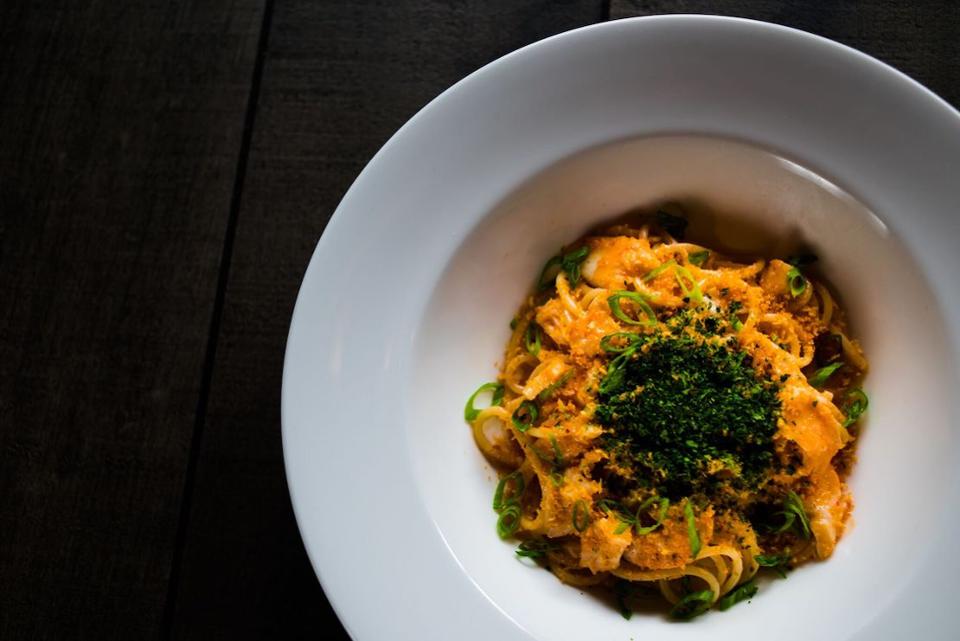
Mentaiko spaghetti with chili Pacific uni
Outside of the islands
themselves, Hawaiian food is a great rarity in
the U.S., unless you count tiki bars where the
pupu platters are washed down with mai tais and
zombies. Yet anyone who has been to Hawaii in
the past 20 years knows that some of the most
exciting Pacific Rim cuisine is being innovated
there, spurred by pioneers like Roy Yamaguchi,
Sam Choy, Peter Merriman, George
Mavrothalassitis, Beverly Gannon, Alan Wong and
many others.
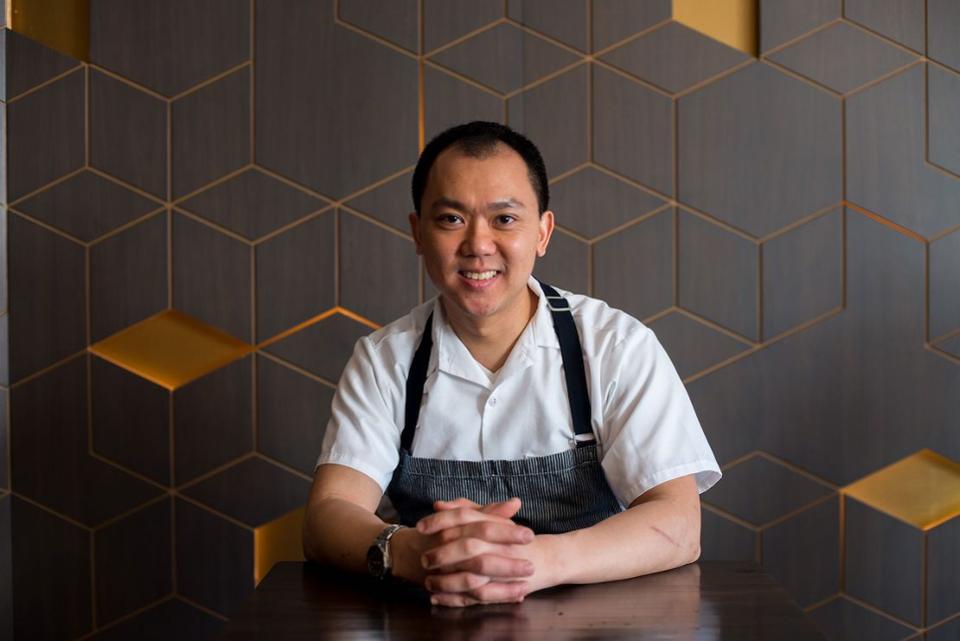 How
delightful, then, to find a first-rate
representative of the cuisine on New York’s Lower
East Side, where Chef Chung Chow and
partner-manager Jin Ahn have taken the ideas and
ingredients from Hawaii and made them their own at
their four-year-old Noreetuh, which means,
tellingly, “playground.”
How
delightful, then, to find a first-rate
representative of the cuisine on New York’s Lower
East Side, where Chef Chung Chow and
partner-manager Jin Ahn have taken the ideas and
ingredients from Hawaii and made them their own at
their four-year-old Noreetuh, which means,
tellingly, “playground.”
The restaurant is composed of
two rooms separated by a wall. The one my party
sat in had some typical Hawaiian travel posters
and hundreds of small photos of friends, staff and
regulars. The big wooden tables are spacious but
the lighting is too low to allow for easy menu
reading and to see the wonderful color of the food
presentations. The unnecessary (non-Hawaiian)
canned music should be turned down or off.
Except for a wagyu
beef dish ($70) and an uni pasta
($34) nothing tops $28 on the menu, so ordering a
bunch of appetizers is a good way for a table to
share these enticing tastes. They have a beer,
wine and sake license, and the list is extensive,
but if you’re looking forward to a cocktail with a
little umbrella in it, you’re out of luck.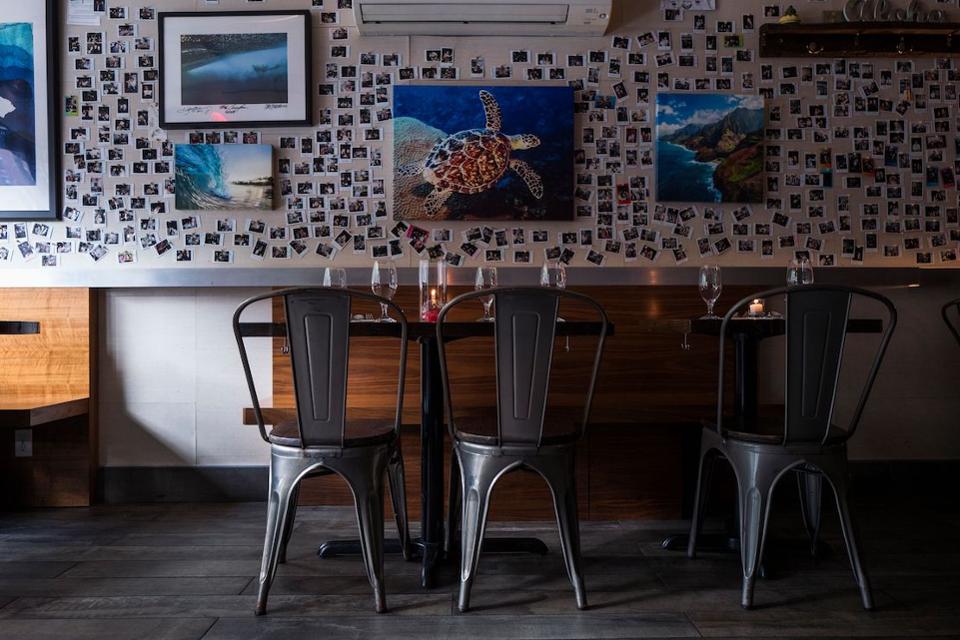
Chow has quite the résumé, with
long stints at Per Se under Thomas Keller, then at
Lincoln Ristorante with Jonathan Benno. He was
born in China and grew up in Hawaii and Japan, so
his Polynesian roots are deep (Ahn was born in
South Korea).
I left myself in the chef’s
hands and received an array of musubi appetizers,
which included rice-bound sandwiches similar to
nigiri sushi, only these were layered with
delectably fatty beef tongue, cilantro and peanuts
($9); rich, velvety pork jowl with scallion and
ginger ($9), and spicy Spam with soy, mayo and
jalapeño ($7). Frankly, I’d never tasted Spam—it
was not an item my Italian-American mother kept in
her cupboard and it always had a reputation for
being the lowest of canned food ideas. So I was
surprised to find that it tasted pretty good;
after all, it’s just pressed pork and ham with
salt (lots of it), water, modified potato starch,
sugar, and sodium nitrite. And, as everyone knows,
it is a favorite and beloved food in Hawaii—five
cans per person each year—where some of the finest
chefs use it in many of their dishes. I actually
liked it, even if I’m not rushing out to buy a
can.
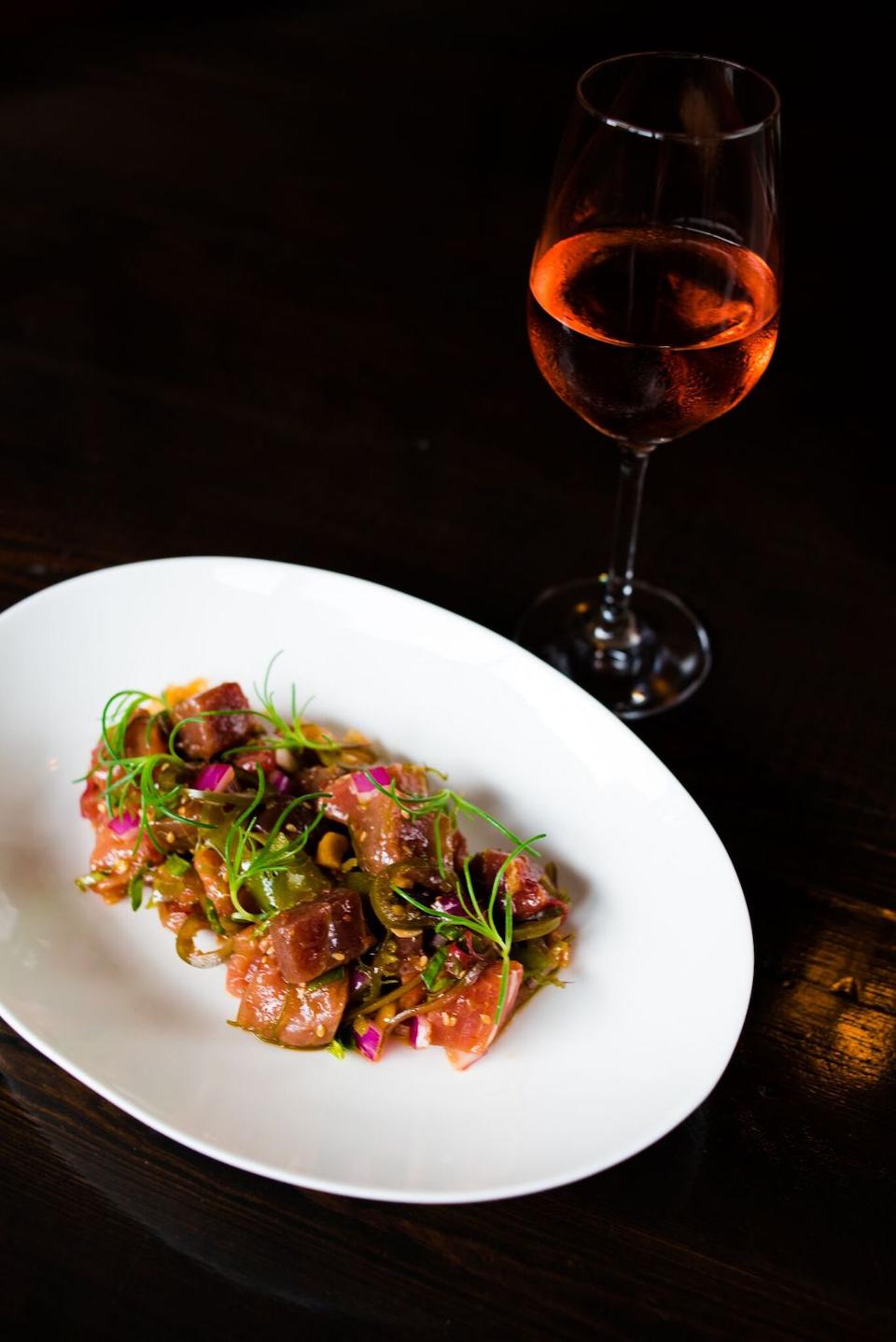 Among the
“small” plates we had hearts of palm and sweet
potatoes with a seed cracker and maple-sweetened
pecan ($12), then another very Hawaiian dish,
big-eye tuna poke greens with macadamia nuts,
pickled jalapeños and seaweed ($22). It’s a good
dish for two to share. Kauai shrimp were well
laced with garlic butter and accompanied with
savory grilled onigiri rice
balls
($17). Truffle
wontons were more of a surprise, with ham hock
meat, New England fiddlehead ferns and very bland
shaved truffles ($28).
Among the
“small” plates we had hearts of palm and sweet
potatoes with a seed cracker and maple-sweetened
pecan ($12), then another very Hawaiian dish,
big-eye tuna poke greens with macadamia nuts,
pickled jalapeños and seaweed ($22). It’s a good
dish for two to share. Kauai shrimp were well
laced with garlic butter and accompanied with
savory grilled onigiri rice
balls
($17). Truffle
wontons were more of a surprise, with ham hock
meat, New England fiddlehead ferns and very bland
shaved truffles ($28).
Hawaiian pastas take advantage
of both Eastern and Western food cultures, so at
Noreetuh mentaiko
spaghetti, usually made with smoked cod, came with
chili and pleasingly mild Pacific sea urchins
($34).
When trout is very, very fresh,
even though farmed, it’s a good palette for Chow’s
Asian herb salad and a pesto ground with peanuts
and Thai basil ($22). With its sweet and sour
notes, pineapple-braised pork belly came with soft
polenta and pickled mushrooms ($22). I was a
little surprised that Noreetuh offered two wagyu
dishes, one made with American-raised Imperial wagyu,
whose luscious richness was increased by a serving
of rice blended with beef fat, pickled garlic and
radish ($34); the option, at twice the price, is
the same dish with Japanese Miyazaki A5 wagyu,
which is not much of an improvement over the
former.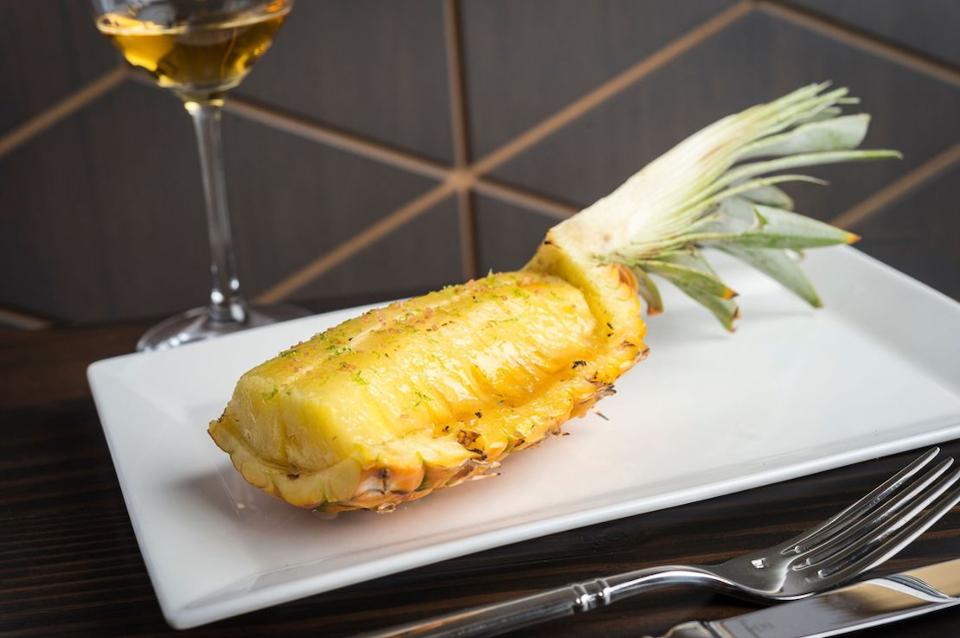
You might wonder if Hawaiians
have indigenous desserts, and there are indeed
many dishes made with pineapple, coconut, taro and
sweet potato. Probably the best known is haupia, a
pudding made from coconut, coconut milk and sugar,
which Chow makes as a chocolate sundae with
almonds and Graham cracker ($5 or $10). I also
loved the sliced pineapple that was given a brûlée
treatment and spiced with lime zest and red alaea sea
salt ($10).
New
York is low on Hawaiian restaurants of any
stripe—Onomea in Willliamsburg closed a while
back, and Makana in Harlem is more
a Japanese-style barbecue—and none is doing the
kind of innovative, stylish, beautifully composed
food that Noreetuh does. Plus, it’s a helluva lot
of fun to eat there.
Open nightly for dinner.
❖❖❖
FRANCIACORTA, NOT PROSECCO, IS THE NEAREST
THING TO FINE CHAMPAGNE IN ITALY
By John Mariani
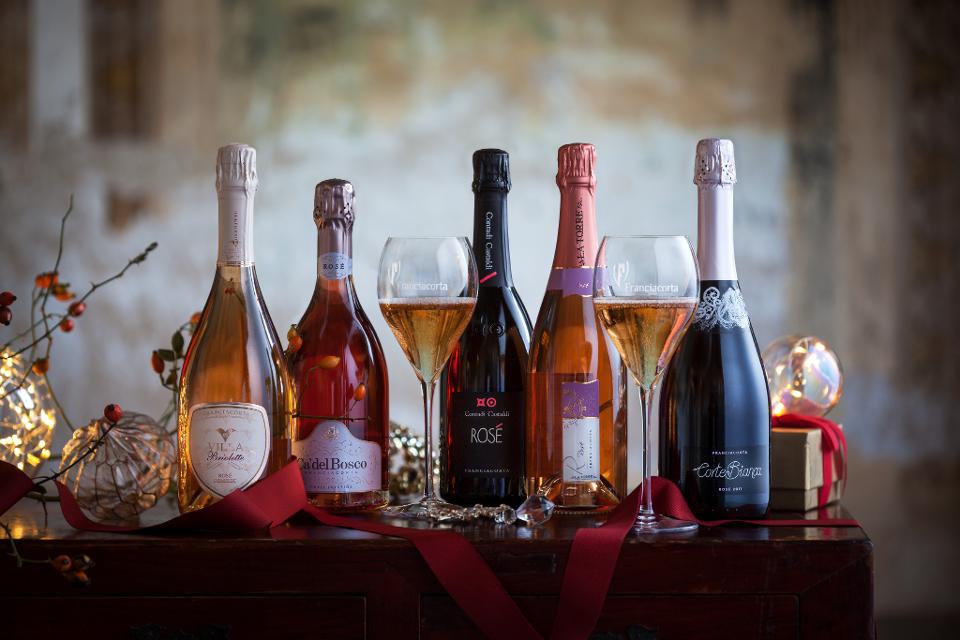
Invariably wine lovers
compare the world’s sparkling wines to
Champagne, a not unreasonable consideration
since Champagne has since its creation been a
model for what sparkling wine should taste like.
Indeed, winemakers who produce bubbly wines
around the world often use the so-called méthode
champenoise by which still wine receives
an addition of sugar called liqueur de
triage or dosage
that starts a secondary fermentation into
alcohol and CO2. Lesser, cheaper methods, with
names like Charmat, are used to make cheaper
sparkling wines in bulk, like Italy’s Prosecco,
which has achieved major market share worldwide
in its category.
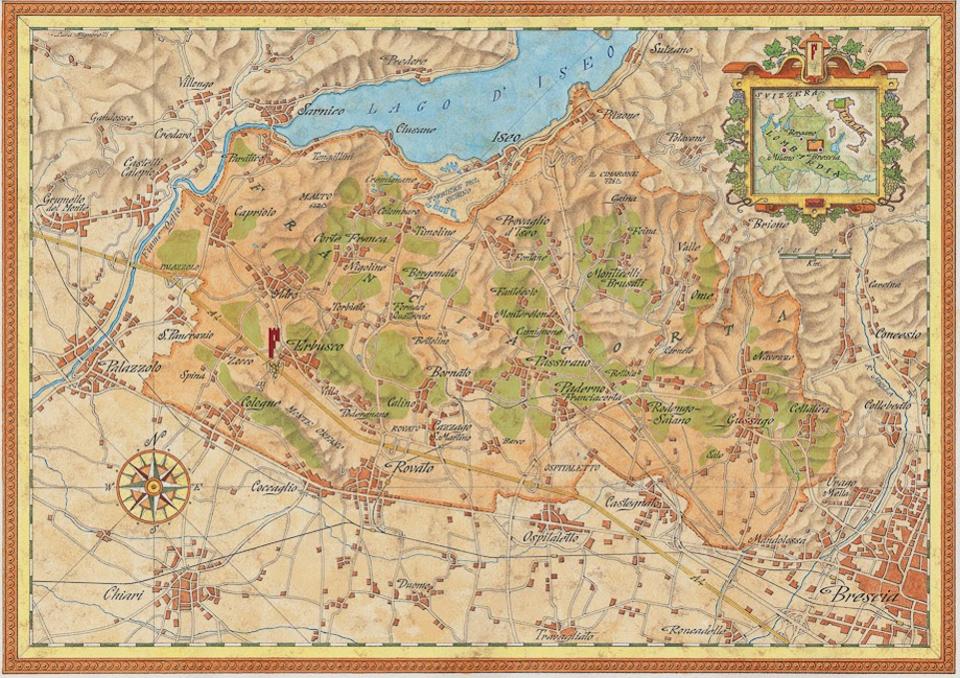 Sometimes
neglected, or at least not as well known, are the
sparklers of the Franciacorta region of Lombardy
in northern Italy, whose producers do use the méthode
champenoise. (The general term for sparkling
in French is mousseux,
in Italian, frizzante
or spumante,
though the latter usually refer to Asti Spumante.)
As a result, Franciacorta is among the more
expensive Italian sparklers, though never at the
price levels of the best Champagnes.
Sometimes
neglected, or at least not as well known, are the
sparklers of the Franciacorta region of Lombardy
in northern Italy, whose producers do use the méthode
champenoise. (The general term for sparkling
in French is mousseux,
in Italian, frizzante
or spumante,
though the latter usually refer to Asti Spumante.)
As a result, Franciacorta is among the more
expensive Italian sparklers, though never at the
price levels of the best Champagnes.
Like Champagnes, Franciacorta
wines are usually a blend of Chardonnay and Pinot
Noir (Pinot Nero in Italian), with proportions of
Pinot Bianco and, only recently, Erbamat, an
ancient white varietal from the Lombardian
province of Brescia.
Franciacortas wines
are designated by the degree of the dosage
used: Pas dose, the driest, has sugar up to 3
grams per liter; Extra Brut, up to 6 g/l; Brut,
less than 12 g/l; Extra Dry, 12-17 g/l; Sec or
Dry, 17-32
g/l; Demi-Sec, the sweetest, suitable for
desserts, 33-50 g/l.
Within those categories are
styles, including Franciacorta Millesimato (millesimo
means vintage), for which 85% of the wine comes
from a single year and released a minimum of 37
months after the harvest. As in Champagne, these
vintage-labeled wines are produced only in high
quality years.
Franciacorta Riserva wines are a blend of
exceptional vintages whose grapes remain on their
lees for at least five years and are released 67
months after the harvest. They are more robust
than most other Franciacorta wines.
Sparkling wines were not
created in the Champagne region (though the méthode
champenoise was), and, in fact, Lombardy has
been making bubblies since the 16th century. In
1570, Dr. Gerolamo Conforti published Libellus de
Vino Mordaci—a Dissertation
on Sparkling Wine—years before France’s Dom
Pérignon expounded on the subject.
But, as with the majority of
Italian wines, Franciacorta’s unique qualities
were not fully appreciated until well after World
War II, with the recovery of the vineyards in the
1950s. Only in 1967 did the name Franciacorta
attain official recognition under Italian wine
laws as a DOC. Back then Pinot Bianco was the
preferred grape, with a little Pinot Grigio or
Pinot Nero added.
It was very much a time of
experimentation, when a dozen or so Lombard
wineries, using 50 hectares, sought more
consistency 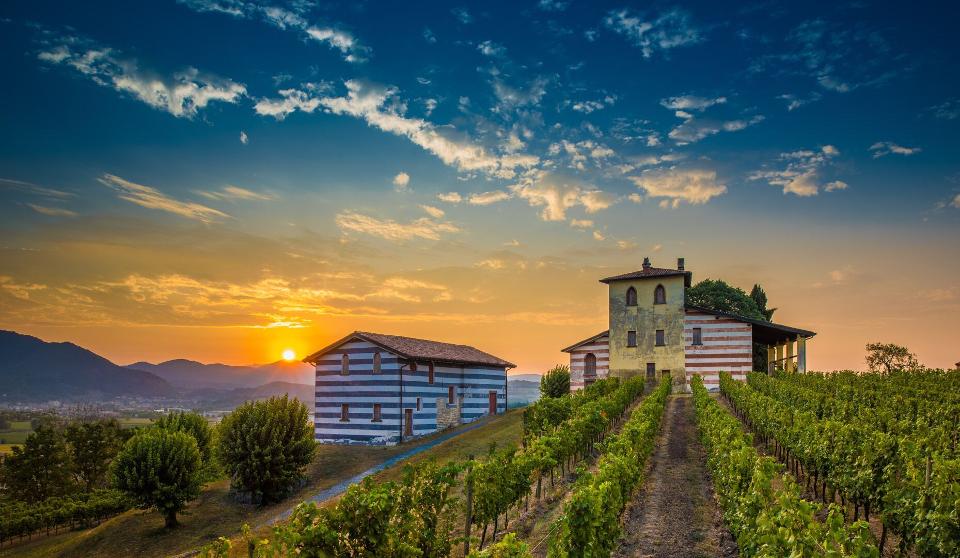 and refinement in
Franciacorta, not least by planting and using
Chardonnay in the blend, which eventually became
the predominant grape. By 1983, there were 550
hectares under cultivation, with a production of
about one million bottles annually. In 1990 a
consortium (now with 200 members) worked further
to improve Franciacorta’s image, eventually
winning the prestigious DOCG appellation for the
best examples in 2000. There are today 19
municipalities in Lombardy that are approved to
carry the Franciacorta appellation. The rules now
declare that only natural bottle fermentation can
be used in the production.
and refinement in
Franciacorta, not least by planting and using
Chardonnay in the blend, which eventually became
the predominant grape. By 1983, there were 550
hectares under cultivation, with a production of
about one million bottles annually. In 1990 a
consortium (now with 200 members) worked further
to improve Franciacorta’s image, eventually
winning the prestigious DOCG appellation for the
best examples in 2000. There are today 19
municipalities in Lombardy that are approved to
carry the Franciacorta appellation. The rules now
declare that only natural bottle fermentation can
be used in the production.
I’ve been a fan of Franciacorta
sparklers since the 1990s, not so much preferring
them to Champagne as finding them just as
delicious as many comparably priced French
bubblies. Indeed,
in a blind tasting of Franciacortas and Champagnes
any differences might be wholly unnoticeable, and
I much prefer a 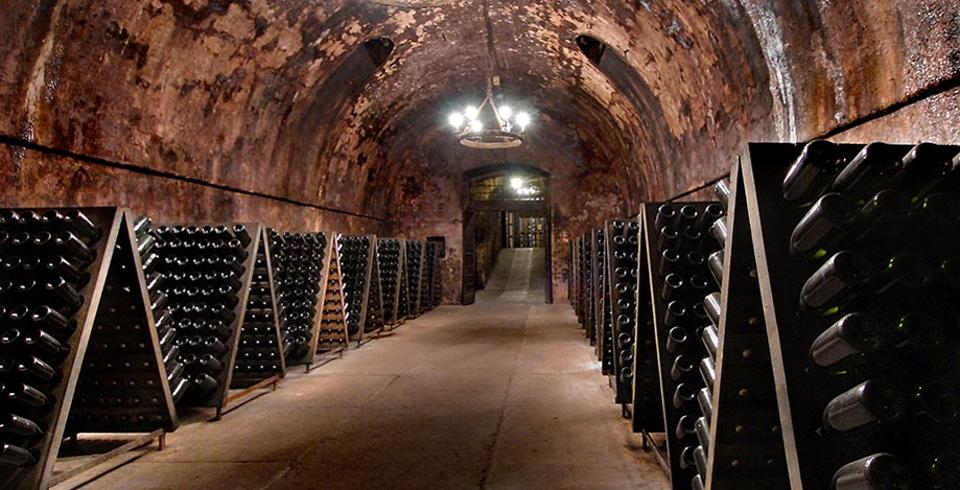 Brut Franciacorta to a
way-too-dry pas
dosage préstige cuvée Champagne. The Brut
goes exceptionally well with the foods and
products of Lombardy, like blue-veined Gorgonzola,
Bel Paese and Robiola Bresciana cheeses, luganega
sausage, zuppa
Pavese, osso buco,
vitello tonnato and saffron-scented risotto alla
milanese. The sweeter Demi-Sec is delicious
with torrone
nougat and the Christmas panettone cake.
Brut Franciacorta to a
way-too-dry pas
dosage préstige cuvée Champagne. The Brut
goes exceptionally well with the foods and
products of Lombardy, like blue-veined Gorgonzola,
Bel Paese and Robiola Bresciana cheeses, luganega
sausage, zuppa
Pavese, osso buco,
vitello tonnato and saffron-scented risotto alla
milanese. The sweeter Demi-Sec is delicious
with torrone
nougat and the Christmas panettone cake.
With so many producers, many
don’t yet export (as much as they’d like to), but
there are some outstanding names in the global
market. Guido Berlucchi, an estate whose vineyards
surround the beautiful Palazzo Lana (above), was
founded by Guido Berlucchi, who, together with
Franco Ziliani, claimed to have made the first
modern Franciacorta sparkler in 1961. Now run by
the Ziliani family, the vineyards are spread over
500 hectares, all re-planted in the 1990s and now
the largest producer, with more than five million
bottles released each year.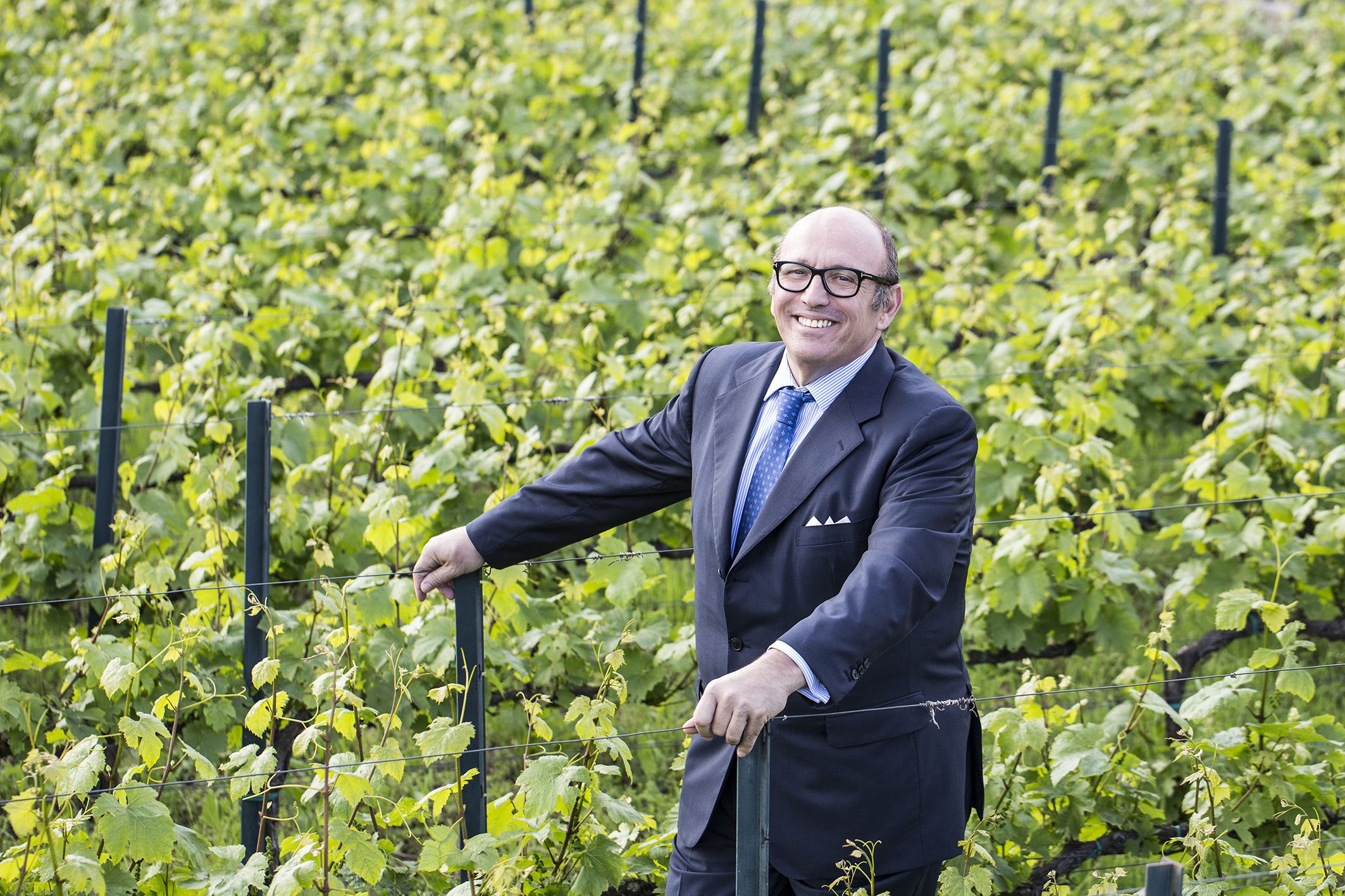
Barone Pizzini, founded in
1870, makes an excellent Brut, and if you like
bone-dry sparklers, its vintage Pas Dose Riserva
Bagnadore is well admired. Also in the Pas Dose
category of note are the wines of Colline della
Stella Arici, made by Andrea Arici of Gussago.
Contadi Castaldi makes a Satèn Soul from 100%
Chardonnay, aged on the lees for up to three years
and aged after disgorgement for six months more.
Cavalleri’s Collection line, which is only made in
superior vintages, spends four years on the lees.
A very refined, subtly complex Franciacorta is one
of the first to hit the international market, Ca'
del Bosco made by Maurizio Zanella (right).
Certainly the
best-known Franciacorta producer, and one of the
real pioneers, is Bellavista, under Vittorio
Moretti (who also owns Contadi Castaldi) and is a
major supporter of the arts in Lombardy—each
vintage of his Brut is dedicated to the new season
of La Scala Opera in Milan and appropriately
packaged. His wines achieve a balance of fruit,
acid and effervescence I find enthralling, and it
is one of the brands fairly available in the U.S.
market.
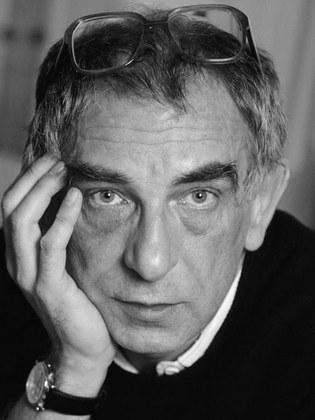 FOOD
WRITING 101: NEVER REFERENCE
FOOD
WRITING 101: NEVER REFERENCE
A 1989 POLISH MOVIE SERIES BY ANYONE
NAMED KRSYSZTOF KIEŚLOWSKI
"The paradox of this is that Pastis is really meant for those nights when you decide to cancel your reservations at the little nine-seat tasting counter where the menu is inspired by Kieslowski’s “Decalogue.” –"Back to Pastis for a Second Helping of Nostalgia" by
Pete Wells, NY Times
(8/14/19)
INVITATIONS WE NEVER RESPONDED TO
“I like
my wine to smell like barnyard and taste like a psycho
house party.”--"Special’s Ryan O’Connell Wants Very Weird Wine,"
![]()
Any of John Mariani's books below may be ordered from amazon.com.
 The Hound in Heaven
(21st Century Lion Books) is a novella, and
for anyone who loves dogs, Christmas, romance,
inspiration, even the supernatural, I hope you'll find
this to be a treasured favorite. The story
concerns how, after a New England teacher, his wife and
their two daughters adopt a stray puppy found in their
barn in northern Maine, their lives seem full of promise.
But when tragedy strikes, their wonderful dog Lazarus and
the spirit of Christmas are the only things that may bring
his master back from the edge of despair.
The Hound in Heaven
(21st Century Lion Books) is a novella, and
for anyone who loves dogs, Christmas, romance,
inspiration, even the supernatural, I hope you'll find
this to be a treasured favorite. The story
concerns how, after a New England teacher, his wife and
their two daughters adopt a stray puppy found in their
barn in northern Maine, their lives seem full of promise.
But when tragedy strikes, their wonderful dog Lazarus and
the spirit of Christmas are the only things that may bring
his master back from the edge of despair. WATCH THE VIDEO!
“What a huge surprise turn this story took! I was completely stunned! I truly enjoyed this book and its message.” – Actress Ali MacGraw
“He had me at Page One. The amount of heart, human insight, soul searching, and deft literary strength that John Mariani pours into this airtight novella is vertigo-inducing. Perhaps ‘wow’ would be the best comment.” – James Dalessandro, author of Bohemian Heart and 1906.
“John Mariani’s Hound in Heaven starts with a well-painted portrayal of an American family, along with the requisite dog. A surprise event flips the action of the novel and captures us for a voyage leading to a hopeful and heart-warming message. A page turning, one sitting read, it’s the perfect antidote for the winter and promotion of holiday celebration.” – Ann Pearlman, author of The Christmas Cookie Club and A Gift for my Sister.
“John Mariani’s concise, achingly beautiful novella pulls a literary rabbit out of a hat – a mash-up of the cosmic and the intimate, the tragic and the heart-warming – a Christmas tale for all ages, and all faiths. Read it to your children, read it to yourself… but read it. Early and often. Highly recommended.” – Jay Bonansinga, New York Times bestselling author of Pinkerton’s War, The Sinking of The Eastland, and The Walking Dead: The Road To Woodbury.
“Amazing things happen when you open your heart to an animal. The Hound in Heaven delivers a powerful story of healing that is forged in the spiritual relationship between a man and his best friend. The book brings a message of hope that can enrich our images of family, love, and loss.” – Dr. Barbara Royal, author of The Royal Treatment.
 |
The Encyclopedia of American Food and Drink by John F. Mariani (Bloomsbury USA, $35) Modesty forbids me to praise my own new book, but let me proudly say that it is an extensive revision of the 4th edition that appeared more than a decade ago, before locavores, molecular cuisine, modernist cuisine, the Food Network and so much more, now included. Word origins have been completely updated, as have per capita consumption and production stats. Most important, for the first time since publication in the 1980s, the book includes more than 100 biographies of Americans who have changed the way we cook, eat and drink -- from Fannie Farmer and Julia Child to Robert Mondavi and Thomas Keller. "This book is amazing! It has entries for everything from `abalone' to `zwieback,' plus more than 500 recipes for classic American dishes and drinks."--Devra First, The Boston Globe. "Much needed in any kitchen library."--Bon Appetit. |
"Eating Italian will never be the same after reading John Mariani's entertaining and savory gastronomical history of the cuisine of Italy and how it won over appetites worldwide. . . . This book is such a tasteful narrative that it will literally make you hungry for Italian food and arouse your appetite for gastronomical history."--Don Oldenburg, USA Today. "Italian
restaurants--some good, some glitzy--far
outnumber their French rivals. Many of
these establishments are zestfully described
in How Italian Food Conquered the World, an
entertaining and fact-filled chronicle by
food-and-wine correspondent John F.
Mariani."--Aram Bakshian Jr., Wall Street
Journal.
"Equal parts
history, sociology, gastronomy, and just
plain fun, How Italian Food Conquered the
World tells the captivating and delicious
story of the (let's face it) everybody's
favorite cuisine with clarity, verve and
more than one surprise."--Colman Andrews,
editorial director of The Daily
Meal.com. "A fantastic and fascinating
read, covering everything from the influence
of Venice's spice trade to the impact of
Italian immigrants in America and the
evolution of alta cucina. This book will
serve as a terrific resource to anyone
interested in the real story of Italian
food."--Mary Ann Esposito, host of PBS-TV's
Ciao
Italia. "John Mariani has written the
definitive history of how Italians won their
way into our hearts, minds, and
stomachs. It's a story of pleasure over
pomp and taste over technique."--Danny Meyer,
owner of NYC restaurants Union Square
Cafe, The Modern, and Maialino.
|
 |
 |
 |
 |
 |
 |
 |
 |
 Everett Potter's Travel Report:
Everett Potter's Travel Report: 
 Eating Las Vegas
JOHN CURTAS has been covering the Las Vegas
food and restaurant scene since 1995. He is
the co-author of EATING LAS VEGAS – The 50
Essential Restaurants (as well as
the author of the Eating Las Vegas web site: www.eatinglasvegas.
He can also be seen every Friday morning as
the “resident foodie” for Wake Up With the
Wagners on KSNV TV (NBC) Channel 3 in
Las Vegas.
Eating Las Vegas
JOHN CURTAS has been covering the Las Vegas
food and restaurant scene since 1995. He is
the co-author of EATING LAS VEGAS – The 50
Essential Restaurants (as well as
the author of the Eating Las Vegas web site: www.eatinglasvegas.
He can also be seen every Friday morning as
the “resident foodie” for Wake Up With the
Wagners on KSNV TV (NBC) Channel 3 in
Las Vegas.
MARIANI'S VIRTUAL GOURMET
NEWSLETTER is published weekly. Publisher: John Mariani. Editor: Walter Bagley. Contributing Writers: Christopher Mariani,
Robert Mariani, Misha Mariani, John A. Curtas, Gerry Dawes, Geoff Kalish,
and Brian Freedman. Contributing
Photographer: Galina Dargery. Technical
Advisor: Gerry
McLoughlin.
If you wish to subscribe to this
newsletter, please click here: http://www.johnmariani.com/subscribe/index.html
© copyright John Mariani 2019

